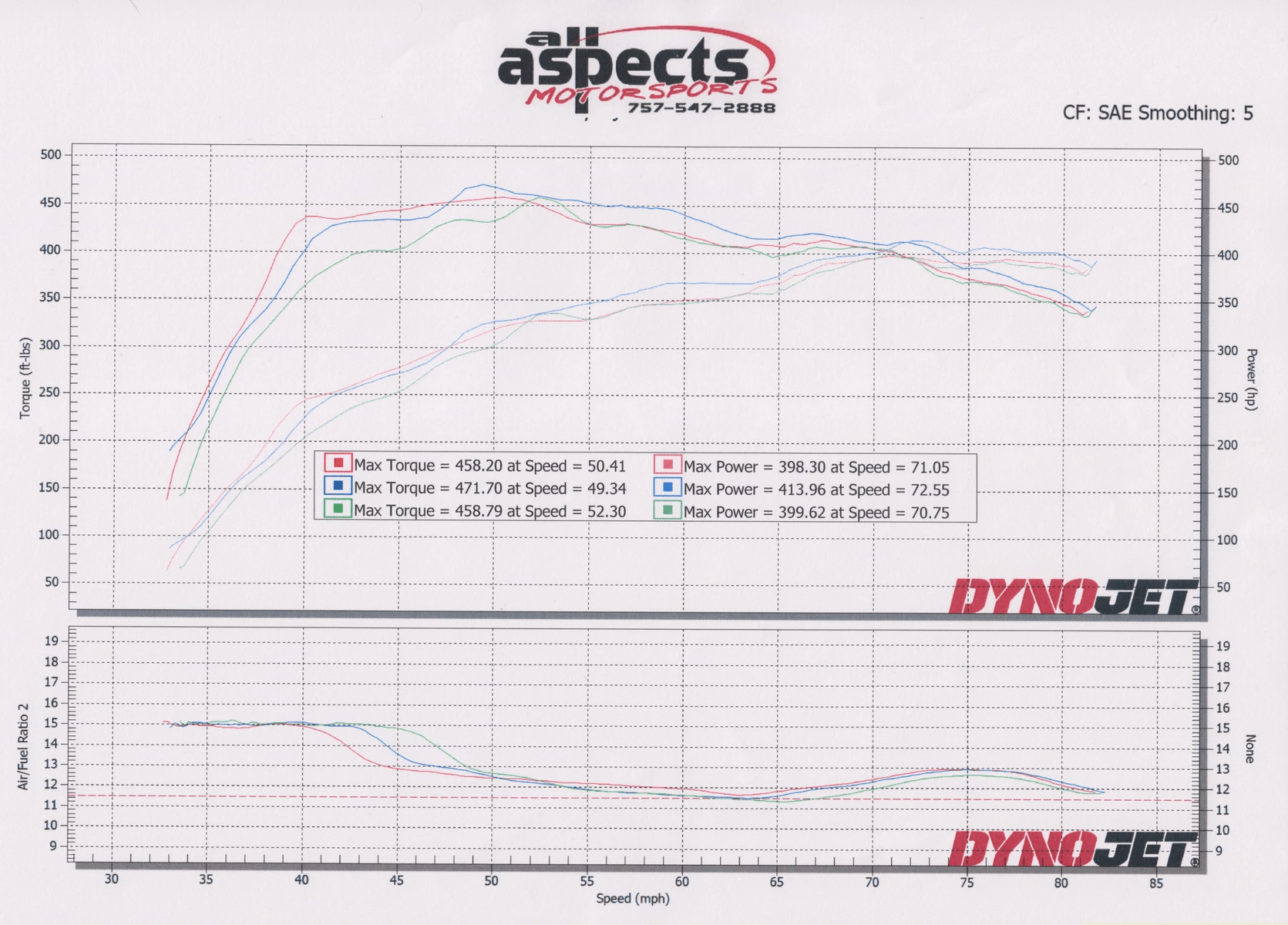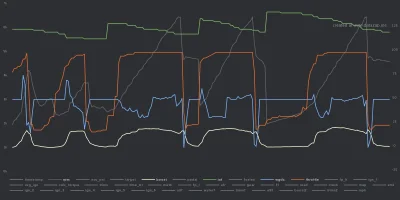Stiletto
Active Member
TL;DR – solid core, subpar product overall, probably better options for the money.
I swapped out the factory heat exchanger for the Ultimate Performance unit. I opted for this brand since they are one of the few that offer a larger cold-side pipe and use a Garrett core. No slight against the other brands, but I prefer an American part if I can get one. Aside from IMR (which uses a Treadstone core) and RPM-Motorsports, you can bet on the cores being made in China. Okay, the Maintec FMIC is made in Korea, so it stands apart too. Agency Power and Mishimoto have almost identical designs when it comes to the shape and mounting of their units. Wagner, RPM, BMS and CX Racing have unique designs and mounting points.
Pros: beefy core, simple mounting points, good welds on the end-tanks
Cons: no install instructions, cold charge pipe welds are terrible (I took the inner mountains down to hills with my Dremel), off center alignment with the lower grill opening, piping and end tanks are fairly “raw” (a decent polish would go a long way to improving the look on a $1k unit…I added the wrinkle red powder-coating) and you have to cut the hot side silicone tube to fit. Also, a mismatching silicone coupler (their supplier couldn’t find black tubes??) and improper sized clamps were also issues, but I was able to source a black silicone elbow and UP did overnight the correct sized clamps.
I considered doing an install guide, but the Agency Power blog does a pretty good job, so I’ll skip the step-by-step. Install is pretty simple, but getting the cold-side pipe in requires a bit if maneuvering and removal of the passenger intake. I chose to orient the MAP sensor differently that stock for a slightly cleaner look.
Overall, for the money, I’m a little let down with the quality. I’ve owned Perrin, ETS, GrimmSpeed ICs and they’ve all been top notch. This just didn’t meet my expectations for this price point.
I’ll have dyno comparison done later this week, so hopefully that will provide more value than just my opinion!
![20210520_131511_HDR~3[1].jpg 20210520_131511_HDR~3[1].jpg](https://stingerforum.org/data/attachments/59/59052-dd5cf42dd5a18256d2e4b0750aef78ff.jpg?hash=ZsPI5wCksi)
![20210520_124218_HDR~3[1].jpg 20210520_124218_HDR~3[1].jpg](https://stingerforum.org/data/attachments/59/59054-d6c16c2a43d009679bbba17b1a0751db.jpg?hash=H7VR1c_jjt)
![20210520_124427_HDR~2[1].jpg 20210520_124427_HDR~2[1].jpg](https://stingerforum.org/data/attachments/59/59055-37cc6b12cc224c2c467dd14ec64c7028.jpg?hash=DFK1yps_SY)
![20210520_124332_HDR~3[1].jpg 20210520_124332_HDR~3[1].jpg](https://stingerforum.org/data/attachments/59/59056-21bed018efb0e524d5639b5c9b33158e.jpg?hash=q4aVqDBU9I)
![20210520_140543_HDR~2[1].jpg 20210520_140543_HDR~2[1].jpg](https://stingerforum.org/data/attachments/59/59057-b2eb543b2ba760b9000600edb1cee7bd.jpg?hash=Dtnhv7lR02)
![20210522_101643_HDR~2[1].jpg 20210522_101643_HDR~2[1].jpg](https://stingerforum.org/data/attachments/59/59058-34dfa0b8fc60d3e33977e6788cc8e6de.jpg?hash=D5T_M5qm3L)
![20210521_144332_HDR~2[1].jpg 20210521_144332_HDR~2[1].jpg](https://stingerforum.org/data/attachments/59/59059-4764bbb9dc09f47ec81dbe8f8c946841.jpg?hash=qs_R53MFQk)
![20210522_101558~2[1].jpg 20210522_101558~2[1].jpg](https://stingerforum.org/data/attachments/59/59060-774737154ad3ce31bb5cd78241100db0.jpg?hash=t4279LNQLo)
I swapped out the factory heat exchanger for the Ultimate Performance unit. I opted for this brand since they are one of the few that offer a larger cold-side pipe and use a Garrett core. No slight against the other brands, but I prefer an American part if I can get one. Aside from IMR (which uses a Treadstone core) and RPM-Motorsports, you can bet on the cores being made in China. Okay, the Maintec FMIC is made in Korea, so it stands apart too. Agency Power and Mishimoto have almost identical designs when it comes to the shape and mounting of their units. Wagner, RPM, BMS and CX Racing have unique designs and mounting points.
Pros: beefy core, simple mounting points, good welds on the end-tanks
Cons: no install instructions, cold charge pipe welds are terrible (I took the inner mountains down to hills with my Dremel), off center alignment with the lower grill opening, piping and end tanks are fairly “raw” (a decent polish would go a long way to improving the look on a $1k unit…I added the wrinkle red powder-coating) and you have to cut the hot side silicone tube to fit. Also, a mismatching silicone coupler (their supplier couldn’t find black tubes??) and improper sized clamps were also issues, but I was able to source a black silicone elbow and UP did overnight the correct sized clamps.
I considered doing an install guide, but the Agency Power blog does a pretty good job, so I’ll skip the step-by-step. Install is pretty simple, but getting the cold-side pipe in requires a bit if maneuvering and removal of the passenger intake. I chose to orient the MAP sensor differently that stock for a slightly cleaner look.
Overall, for the money, I’m a little let down with the quality. I’ve owned Perrin, ETS, GrimmSpeed ICs and they’ve all been top notch. This just didn’t meet my expectations for this price point.
I’ll have dyno comparison done later this week, so hopefully that will provide more value than just my opinion!
![20210520_131511_HDR~3[1].jpg 20210520_131511_HDR~3[1].jpg](https://stingerforum.org/data/attachments/59/59052-dd5cf42dd5a18256d2e4b0750aef78ff.jpg?hash=ZsPI5wCksi)
![20210520_124218_HDR~3[1].jpg 20210520_124218_HDR~3[1].jpg](https://stingerforum.org/data/attachments/59/59054-d6c16c2a43d009679bbba17b1a0751db.jpg?hash=H7VR1c_jjt)
![20210520_124427_HDR~2[1].jpg 20210520_124427_HDR~2[1].jpg](https://stingerforum.org/data/attachments/59/59055-37cc6b12cc224c2c467dd14ec64c7028.jpg?hash=DFK1yps_SY)
![20210520_124332_HDR~3[1].jpg 20210520_124332_HDR~3[1].jpg](https://stingerforum.org/data/attachments/59/59056-21bed018efb0e524d5639b5c9b33158e.jpg?hash=q4aVqDBU9I)
![20210520_140543_HDR~2[1].jpg 20210520_140543_HDR~2[1].jpg](https://stingerforum.org/data/attachments/59/59057-b2eb543b2ba760b9000600edb1cee7bd.jpg?hash=Dtnhv7lR02)
![20210522_101643_HDR~2[1].jpg 20210522_101643_HDR~2[1].jpg](https://stingerforum.org/data/attachments/59/59058-34dfa0b8fc60d3e33977e6788cc8e6de.jpg?hash=D5T_M5qm3L)
![20210521_144332_HDR~2[1].jpg 20210521_144332_HDR~2[1].jpg](https://stingerforum.org/data/attachments/59/59059-4764bbb9dc09f47ec81dbe8f8c946841.jpg?hash=qs_R53MFQk)
![20210522_101558~2[1].jpg 20210522_101558~2[1].jpg](https://stingerforum.org/data/attachments/59/59060-774737154ad3ce31bb5cd78241100db0.jpg?hash=t4279LNQLo)








